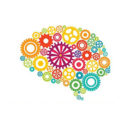WYSIWYG: What You See is What You Get
Mental Imagery is a central skill for optimising performance and achieving goals across the spectrum of human endeavour. It is especially effective in facilitating change—whether this has to do with adapting to change; or to changing how we think, feel and act. Change of any kind doesn’t come easy. As they say, old habits die hard; and the best predictor of future behaviour is past behaviour. But history need not be destiny. We can harness the power of imagination to increase our chances of success, or we can leave our success to chance.
Much of how we are and what we do is dictated by images of our mind. That is, we tend to think, feel, behave, consistent with whatever self-image is most dominant at the time. We tend to recreate outer conditions to match our inner conditions. This is what explains how most lotto winners are in worse debt than ever within one year of their big win. [I kno
w, that would never happen to you and me! 😉 ] A classic sport example is an athlete winning a race or beating an opponent for the first time. Without previous experience of being in this position, they will tend to adjust their effort until the outer result matches their inner image. I cannot tell you how many an athlete reports kicking themselves afterwards! The key is to be prepared for such opportunities. By mentally practicing being in such a position without being distracted by it. I have a great example of how this had worked for an athlete who came out of nowhere to win an Olympic gold medal . Every day for six months prior to the Olympic games—he would stand on a podium, his sister would hang a gold medal around his neck, and then play their national anthem.
Those were examples of extraordinary cases. Most of us will never be in possession of a lotto win, or be in position to compete for an Olympic gold medal. But the examples do highlight a process that we can all access, develop and utilize to our advantage. Such practice and mental preparation fosters the belief necessary to not only persist in the hard work that it takes to achieve, but to maintain the focus necessary to stay the course when in the position to sieze the opportunity. This is the definition of luck: preparation meeting opportunity.
“Imagination is more important than knowledge.” ~ Albert Einstein
Mental imagery is about applying knowledge in the most constructive and effective way, by preparing for the worst, while planning and hoping for the best. It is also many times more effective than what you think and say to yourself. A picture is worth a thousand words! This is borne out by recent neuroscience.
The advantage of practicing mental imagery, is that it affords us the opportunity to practice that which we have little experience with.
The advantage of practicing mental imagery, is that it affords us the opportunity to practice that which we have little experience with. In doing so, we are actually boosting our inner repertoire—as the brain cannot tell the difference between what is perceived to be real or imagined (based on fMRI studies). Therefore, whatever you imagine, registers as actual experience and the information data base of your reality. Of course, there are natural limitations, and must be tested in real situations.
Your images = information. What information do you wish to base your actions upon and project?
The best place to start tuning in to your best self-image—is to review a time and place (hopefully recent and fresh) when you felt and did your best. Then take this image and project to a future challenge or event—imagining being and acting the same way again… What you see is (more likely) what you’ll get.





